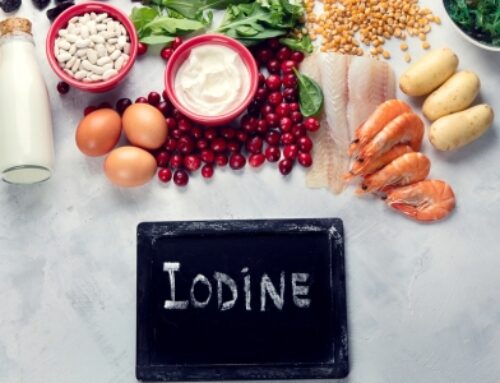
Endometriosis is a chronic condition where tissue like the lining of the uterus (endometrium) grows outside the uterus. This tissue can attach to orga like the ovaries, fallopian tubes, and bowel, leading to inflammation, scarring, and pain, especially during periods (like we needed periods to be any more painful than they already are!). It can also contribute to fatigue, digestive issues, and infertility. The severity of symptoms varies widely, and while there is no cure, treatment options like medication, surgery, and lifestyle changes can help manage it.
Is there a specific diet for Endo?
There’s no one-size-fits-all diet for endometriosis, but eating a healthy, balanced diet that’s rich in plant foods and healthy fats can support overall wellbeing and may help reduce symptoms. You might have heard that people with endometriosis should completely avoid foods like gluten, dairy, or soy, but there’s no strong scientific evidence that these foods are harmful for everyone with endo. In fact, many of these foods can be part of a balanced, nutrient-rich diet unless you have a diagnosed intolerance or allergy. The key is to focus on variety and whole foods, rather than following rigid or restrictive rules.
What can food to support an Endo body?
Eat a high fibre diet
Fibre may help eliminate excess oestrogen from the body, supporting hormonal balance (1, 4). It also keeps bowel movements regular and can ease IBS-like symptoms, which are common in endometriosis.
Great sources of fibre include wholegrains, nuts, seeds, legumes, fruits, and vegetables.
- 👉 For more practical ways to increase your fibre intake? Read this article by our senior specialist dietitian, Clare: Smuggle more fibre into your day.
- 👉 If you’re experiencing IBS-type gut symptoms alongside endo, this article may help: Endometriosis and gut health
Boost antioxidant intake
Antioxidants help to reduce oxidative stress and inflammation, which may reduce pain in endometriosis (5).
Aim to include a wide variety of colourful fruits and vegetables across the week.
Here are some easy ways you can add more fruit and veg into your day:
- Add a steam-fresh veggie bag to dinner
- Snack on baby carrots or mini cucumbers with dip
- Warm frozen berries to spoon over oats
- Enjoy stewed apples with yoghurt for dessert
- Use pre-packed salads for quick meals
- Roast veggies in the air fryer to add into wraps, salads, or as a side
- Blend frozen fruit into smoothies
- Grate extra veggies into pasta sauces
Increase intake of omega 3s fats
Anti-inflammatory properties may help reduce pain and inflammation (7).
Found in oily fish (e.g. salmon, sardines), chia seeds, flaxseeds, and walnuts
Try boosting your intake by:
- Sprinkling a tablespoon of chia seeds onto breakfast cereal or yoghurt
- Snacking on walnuts or having them as a salad topper
- Making a tuna wrap or sandwich for lunch
- Having baked salmon for dinner
- Snacking on sardines on wholegrain crackers
Limit inflammatory foods
Inflammatory foods can include:
- Trans and saturated fats (fried foods, fatty meats) – these are linked to increased levels of inflammatory biomarkers like C-reactive protein, as well as adverse effects on cholesterol balance and cardiovascular risk (6)
- Refined sugars (soft drinks, lollies, baked goods) – these can spike blood sugar and insulin levels, triggering inflammatory responses in the body (2)
- Red and processed meats – these often contain high levels of saturated fat, haeme iron and, in the case of processed meats, additives like nitrates, all of which are linked to increased inflammation (3).
- Processed and packaged foods – these often contain high levels of refined carbohydrates, unhealthy fats and additives, all of which can promote inflammation.
Ways to reduce inflammatory foods:
- Cook simple one-pan or air fryer meals at home
- Look for short, real-food ingredient lists on packaged foods
- Swap fatty meats (e.g. pork) for lean protein such as chicken breast
- Use olive oil or avocado oil for cooking instead of butter
- Make your own baked goods
- Try diet versions of drinks
- Sweeten recipes with fruit, dates, or yoghurt
- Swap ham for oven-roasted, seasoned chicken- shred and store in fridge
Here is an example day incorporating all the above principles:
Breakfast
|
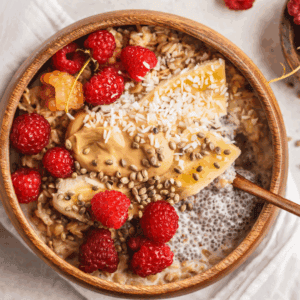 |
|---|---|
Morning Snack
|
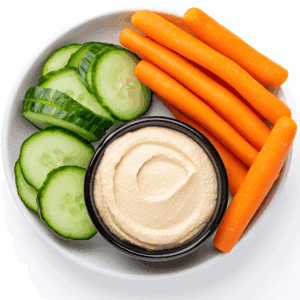 |
Lunch
|
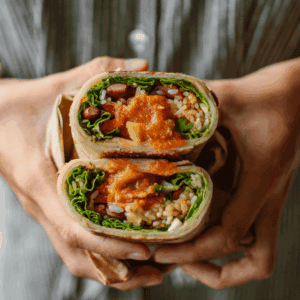 |
Afternoon Snack
|
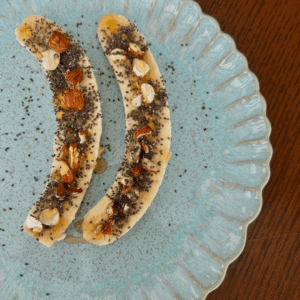 |
Dinner
|
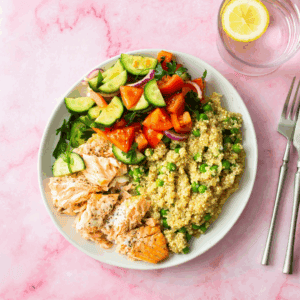 |
Dessert / Evening Snack
|
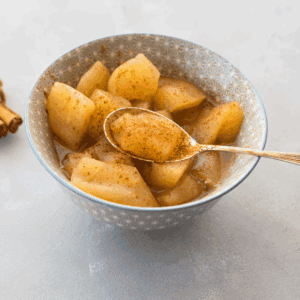 |
Daily totals:
-
- Approximately 30g fibre,
- Multiple sources of omega-3s (chia, flaxseed, walnuts, salmon, tuna)
- High antioxidant intake from colourful fruit and vegetables.
While there’s no single “endo diet,” making thoughtful food choices can play a big role in supporting your body and reducing symptoms. A balanced eating pattern rich in fibre, antioxidants, and omega-3 fats, and lower in highly processed foods, added sugars, and red meats can help manage inflammation, support gut health, and improve overall wellbeing. You don’t have to make all these changes at once, even small, gradual steps can add up to meaningful improvements over time. If you’d like to develop a plan of attack, come and speak to me in clinic so that we can tackle it one step at a time.
References
- Goldin, B.R., Woods, M.N., Spiegelman, D.L., Longcope, C., Morrill-LaBrode, A., Dwyer, JT., Gualtieri, LJ., Hertzmark, E., & Gorbach, S.L. (1994). The effect of dietary fat and fiber on serum estrogen concentrations in premenopausal women under controlled dietary conditions. Cancer, 74(S3), pp. 1125–1131. doi:10.1002/1097-0142(19940801)74:3+<1125::aid-cncr2820741521>3.0.co;2-5.
- Ma, X., Nan, F., Liang, H., Shu, P., Fan, X., Song, X., Hou, Y., & Zhang, D. (2022). Excessive intake of sugar: An accomplice of inflammation. Frontiers in Immunology, 13. doi:10.3389/fimmu.2022.988481.
- Papier, K. Hartman, L., Tong, T.Y.N., Key, T.J., & Knuppel, A. (2022). Higher meat intake is associated with higher inflammatory markers, mostly due to adiposity: Results from UK Biobank. The Journal of Nutrition, 152(1), pp. 183–189. doi:10.1093/jn/nxab314.
- Rose, D.P., Goldman, M., Connolly, J.M., & Strong, L.E. (1991). High-fiber diet reduces serum estrogen concentrations in premenopausal women. The American Journal of Clinical Nutrition, 54(3), pp. 520–525. doi:10.1093/ajcn/54.3.520.
- Santanam, N., Kavtaradze, N., Murphy, A., Dominguez, C., & Parthasarathy, S. (2013) ‘Antioxidant supplementation reduces endometriosis-related pelvic pain in humans’, Translational Research, 161(3), pp. 189–195. doi:10.1016/j.trsl.2012.05.001.
- Santos, S., Oliveira, A., & Lopes, C. (2013). Systematic review of saturated fatty acids on inflammation and circulating levels of adipokines. Nutrition Research, 33(9), pp. 687–695. doi:10.1016/j.nutres.2013.07.002.
- Simopoulos, A.P. (2002) ‘Omega-3 fatty acids in inflammation and autoimmune diseases’, Journal of the American College of Nutrition, 21(6), pp. 495–505. doi:10.1080/07315724.2002.10719248.



